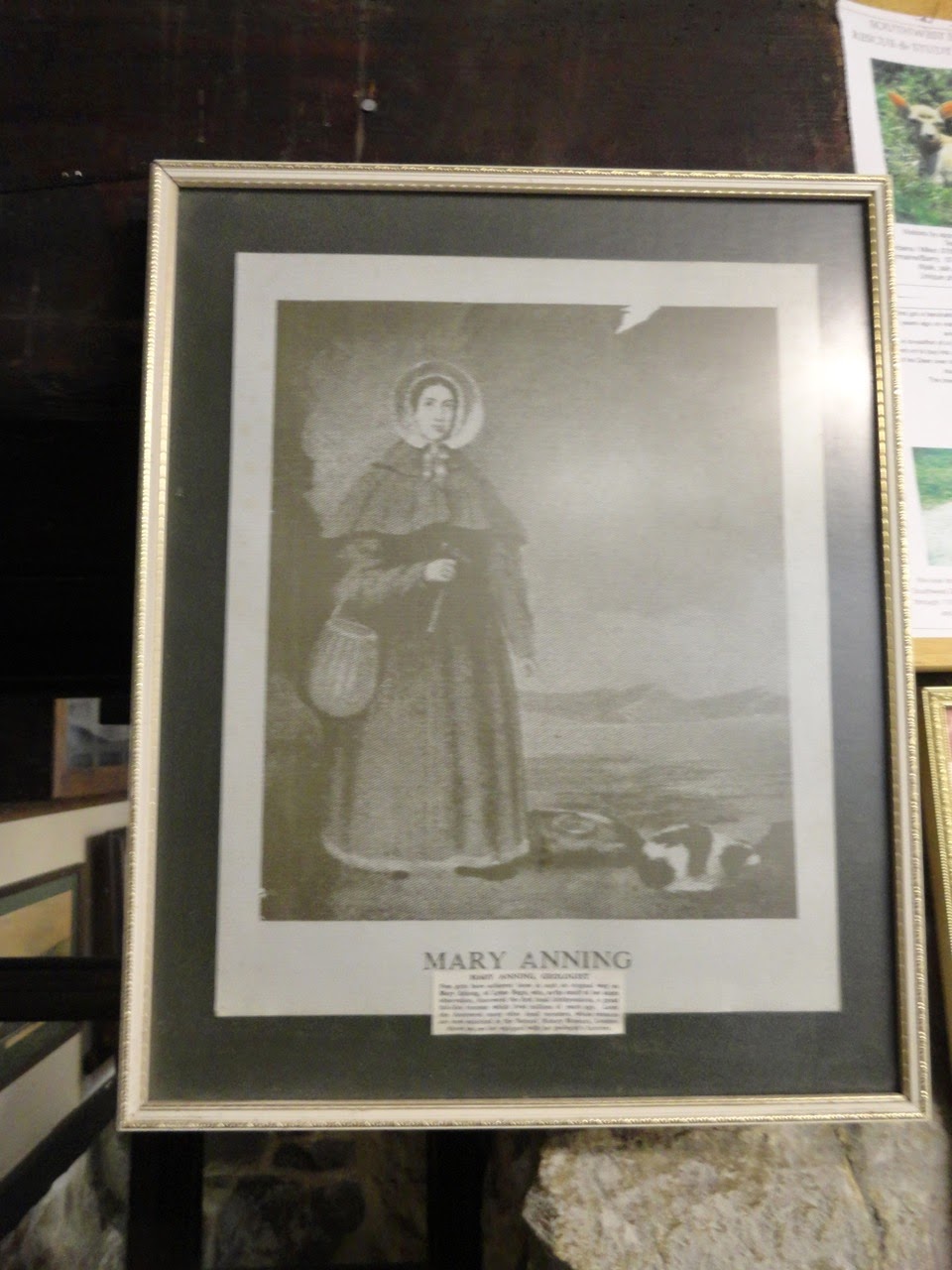 |
| Faux shark tooth |
April 19 - Today it wasn't quantity that made the day; it was the piece of wood impersonating a shark tooth found in the Belemnite Marls Beds at low tide. 'Twas exciting until the geologist smirked.
We walked 5 minutes to the beach from our Hideaway, a very sweet 2 bedroom cottage decorated with nautical flavor in Charmouth, a delightfully tiny 2-pub village a few miles from Lyme Regis. Normally we would be able to take the cliff walk between villages, but recent land slides have closed several portions of the hike. Heading east from Charmouth Bay, we walked the beach perhaps a mile along the base of the 450' Stonebarrow cliff toward Seatown, where we were yesterday.
 |
| Barry in foreground at foot of Stonebarrow; Charmouth village in right center of
photo under green hill; Lyme Regis is just out of view around the bay to the
left. Black Ven area behind Charmouth is home of the largest landslide area in
Europe. |
Many amateur fossil hunters were spread out along the cliff, including children who were more interested in their new hammers than the rocks.
Note the steep dip of the Belemnite Marl Member until it reaches the shore (dark area in the sea at right center), accessible at low tide where belemnites protrude from the surface.
Famous Golden Cap, the 650' hill in the far distance with the Cretaceous golden sand top is currently highly unstable, so most avoid that area.
This area is known for its pyritized ammonites, belemnites, brittle stars, gryphea, nautilus, and more rarely marine reptile and fish fossils such as Pholidophous and Dapedium.
 |
Belemnite Marl Beds with Stonebarrow behind.
|
But we found slim pickings until reaching the belemnite beds, where said shark tooth waited for me in a shallow pool next to modern sea urchins (not found on Iowa farms). The belemnite beds were worth the walk.
 |
Two belemnites, each perhaps 3" long.
|
 |
| Typical belemnite guard size. |
 |
Something moved when I lifted a loose slab of limestone - note live worm ??
embedded in his burrow.
|
I am finding the various geologic layers difficult to distinguish; they all look like mud, mud, and more mud with some shale interwoven. These layers are older than the Whitby Mudstones I'm more familiar with.
Our not-museum-quality cache for the day - pieces of ammonites, belemnites, and
crab:
 |
Charmouth ammonite embedded in cottage wall.
|

 One mile to the west is a wild and wooly coastline which was voted one of Wales' best surfing beaches - Freshwater West. Here Robin Hood (with Russell Crowe and Cate Blanchette) and Harry Potter and the Deathly Hallows were filmed in 2009. If that isn't enough, there's also a thatched seaweed-drying hut and an Iron Age burial chamber.
One mile to the west is a wild and wooly coastline which was voted one of Wales' best surfing beaches - Freshwater West. Here Robin Hood (with Russell Crowe and Cate Blanchette) and Harry Potter and the Deathly Hallows were filmed in 2009. If that isn't enough, there's also a thatched seaweed-drying hut and an Iron Age burial chamber.
 Immediately to the south is an MOD (Ministry of Defence) army tank training range, complete with targets and shooting - commencing Tuesday. The roads will be closed, the cows and sheep moved to safety, and we will be treated to ordinance - right out our window! Prior to WWII local farmers and villagers for several square miles were summarily moved, leaving a landscape of empty homes and a couple of villages.
Immediately to the south is an MOD (Ministry of Defence) army tank training range, complete with targets and shooting - commencing Tuesday. The roads will be closed, the cows and sheep moved to safety, and we will be treated to ordinance - right out our window! Prior to WWII local farmers and villagers for several square miles were summarily moved, leaving a landscape of empty homes and a couple of villages.












































